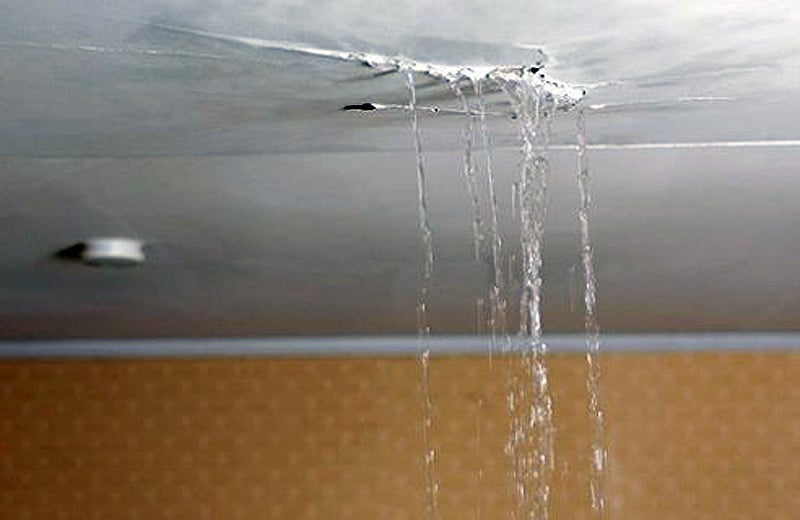Identify Six of Most Leak Triggers Inside Your House
Identify Six of Most Leak Triggers Inside Your House
Blog Article
Are you currently hunting for insight around How to detect water leaks in your home?

Leakages not only trigger waste of water yet can also trigger unnecessary damages to your residence and also promote unwanted organic development. By recognizing and also looking for everyday circumstances that create leaks, you can safeguard your house from future leakages and unneeded damages.
Encroaching roots
Most water leaks begin outside the house rather than inside it. If you discover a sudden decline in water stress, say in your faucet, require time to go out and analyze your yard. You could discover damp patches or sinkholes in your yard, which might indicate that tree roots are attacking water lines triggering water to permeate out. You can have your plumber check for invasion, specifically if you have trees or shrubs near your property.
Rusty water systems
This might be the cause of staining or bending on your water pipelines. If our plumbing system is old, take into consideration changing the pipelines considering that they are at a greater danger of corrosion than the newer versions.
Malfunctioning Pipe Joints
The point at which your pipelines attach is often the weakest link in the waterline. Pipe joints can weaken in time, resulting in water leakages. Unfortunately, most of pipeline joints are not easily noticeable. If you have noisy pipelines that make ticking or banging noises, specifically when the warm water is turned on, your pipe joints are probably under a lot of stress. It is advisable to have your plumber inspect your system once a year.
Instantaneous temperature changes.
Extreme temperature level changes in our pipelines can cause them to increase and get unexpectedly. This development and tightening might cause fractures in the pipelines, specifically if the temperature level are below cold.
Poor Water Connectors
At times, a leakage can be created by loosened hoses and also pipes that supply your home appliances. In instance of a water connections leakage, you may see water running directly from the supply line or puddles around your appliances.
Blocked Drains
Blocked drains pipes may be aggravating and inconveniencing, however they can occasionally wind up creating an overflow leading to break pipelines. Maintain removing any materials that may go down your drains pipes that can obstruct them to prevent such inconveniences.
All the above are reasons for leaks but not all water leakages result from plumbing leakages; some leaks might originate from roofing leaks. All leaks ought to be repaired right away to stay clear of water damages.
Leakages not only create waste of water however can likewise create unneeded damage to your house as well as promote undesirable natural growth. By comprehending and looking for everyday scenarios that cause leakages, you can secure your residence from future leaks as well as unnecessary damage. Today, we will certainly look at 6 leakage triggers that may be triggering your pipes to drip.
At times, a leak can be triggered by loose pipes and also pipelines that provide your devices. In instance of a water links leakage, you might see water running straight from the supply line or pools around your home appliances.
How To Check For Water Leak In Your Home
How To Check for Leaks
The average household's leaks can account for nearly 10,000 gallons of water wasted every year and ten percent of homes have leaks that waste 90 gallons or more per day. Common types of leaks found in the home are worn toilet flappers, dripping faucets, and other leaking valves. These types of leaks are often easy to fix, requiring only a few tools and hardware that can pay for themselves in water savings. Fixing easily corrected household water leaks can save homeowners about 10 percent on their water bills.
To check for leaks in your home, you first need to determine whether you're wasting water and then identify the source of the leak. Here are some tips for finding leaks:
Take a look at your water usage during a colder month, such as January or February. If a family of four exceeds 12,000 gallons per month, there are serious leaks.
Check your water meter before and after a two-hour period when no water is being used. If the meter changes at all, you probably have a leak.
Identify toilet leaks by placing a drop of food coloring in the toilet tank. If any color shows up in the bowl after 10 minutes, you have a leak. (Be sure to flush immediately after the experiment to avoid staining the tank.)
Examine faucet gaskets and pipe fittings for any water on the outside of the pipe to check for surface leaks.
Undetected water leaks can happen without the home or business owner even realizing. If you suspect a water leak, but not able to find the source. It is time to contact a professional water leak detection service, The Leak Doctor.
How To Find a Water Leak In Your Home
https://www.leakdoctor.com/blog/How-To-Check-For-Water-Leak-In-Your-Home_AE197.html

Do you enjoy more info about How to Find Water Leaks? Try to leave feedback directly below. We would be delighted to listen to your reactions about this review. We are looking forward to see you back again soon. Are you aware of someone else who is sincerely interested in the topic? Be sure share it. Thanks a bunch for your time. Don't hesitate to check our site back soon.
Trusted plumbing solutions at hand. Report this page